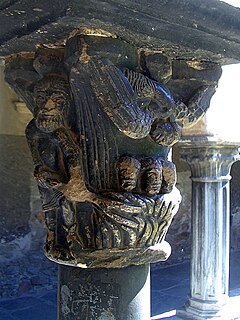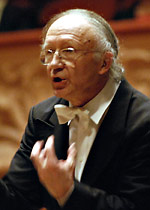The Ensemble für frühe Musik Augsburg is a German early music ensemble founded in 1977 and specializing in medieval music. [1] [2] The ensemble is regarded as "renowned" in Germany. [3]

Medieval music consists of songs, instrumental pieces, and liturgical music from about 500 A.D. to 1400. Medieval music was an era of Western music, including liturgical music used for the church, and secular music, non-religious music. Medieval music includes solely vocal music, such as Gregorian chant and choral music, solely instrumental music, and music that uses both voices and instruments. Gregorian chant was sung by monks during Catholic Mass. The Mass is a reenactment of Christ's Last Supper, intended to provide a spiritual connection between man and God. Part of this connection was established through music. This era begins with the fall of the Western Roman Empire in the fifth century and ends sometime in the early fifteenth century. Establishing the end of the medieval era and the beginning of the Renaissance music era is difficult, since the trends started at different times in different regions. The date range in this article is the one usually adopted by musicologists.
Contents
The founding members are Hans Ganser (voice, recorder, percussion), Rainer Herpichböhm (voice, lute, gothic harp), Heinz Schwamm (voice, fiddle, bombard). In 1981 they were joined by the recorder and shawm player and singer Sabine Lutzenberger. [4] [5] [6] Hans Ganser is also a noted musicologist. For example, Ganser was with Hans-Dieter Munck the first to fit one of Wolkenstein's song texts to a tune by Binchois. [7] [8] Ganser and Herpichböhm are also the editors of an edition of Wolkenstein's songs (1978). [9] The ensemble's musicological work has often formed the framework for practical research into medieval and monastic music. [10]

The recorder is a woodwind musical instrument in the group known as internal duct flutes—flutes with a whistle mouthpiece. A recorder can be distinguished from other duct flutes by the presence of a thumb-hole for the upper hand and seven finger-holes: three for the upper hand and four for the lower. It is the most prominent duct flute in the western classical tradition.

A lute is any plucked string instrument with a neck and a deep round back enclosing a hollow cavity, usually with a sound hole or opening in the body. More specifically, the term "lute" can refer to an instrument from the family of European lutes. The term also refers generally to any string instrument having the strings running in a plane parallel to the sound table. The strings are attached to pegs or posts at the end of the neck, which have some type of turning mechanism to enable the player to tighten the tension on the string or loosen the tension before playing, so that each string is tuned to a specific pitch. The lute is plucked or strummed with one hand while the other hand "frets" the strings on the neck's fingerboard. By pressing the strings on different places of the fingerboard, the player can shorten or lengthen the part of the string that is vibrating, thus producing higher or lower pitches (notes).

The harp is a stringed musical instrument that has a number of individual strings running at an angle to its soundboard; the strings are plucked with the fingers. Harps have been known since antiquity in Asia, Africa and Europe, dating back at least as early as 3500 BC. The instrument had great popularity in Europe during the Middle Ages and Renaissance, where it evolved into a wide range of variants with new technologies, and was disseminated to Europe's colonies, finding particular popularity in Latin America. Although some ancient members of the harp family died out in the Near East and South Asia, descendants of early harps are still played in Myanmar and parts of Africa, and other defunct variants in Europe and Asia have been utilized by musicians in the modern era.











